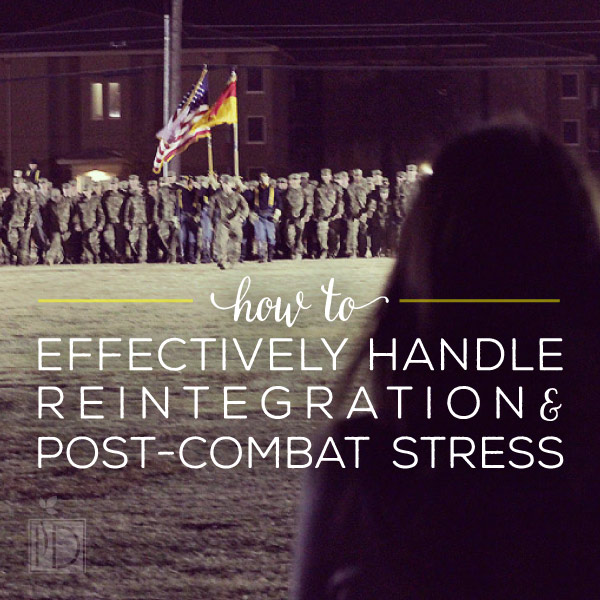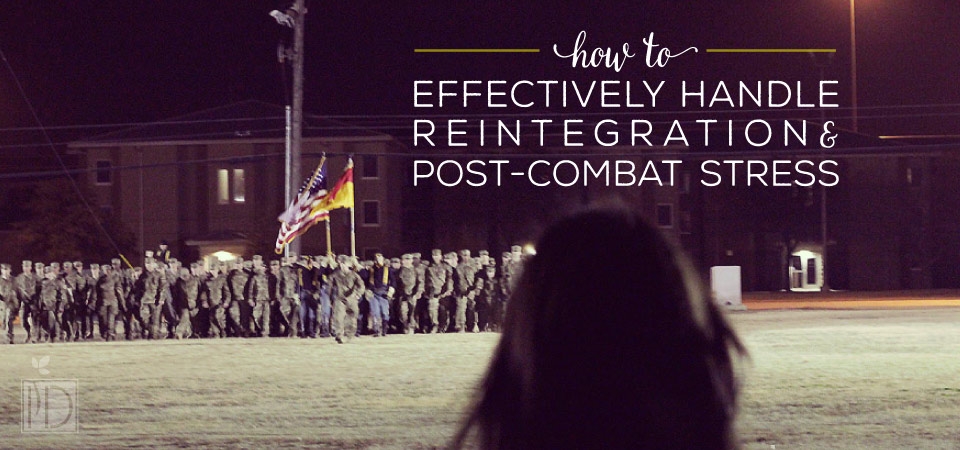 Reintegration can often be just as difficult as the deployment itself. Through experiencing two deployments and reintegrations with my soldier, I have learned some key lessons firsthand. I am not an expert by any stretch of the imagination and still have much to learn, but my intention is to share some nuggets that will hopefully help fellow military spouses trying to navigate these waters.
Reintegration can often be just as difficult as the deployment itself. Through experiencing two deployments and reintegrations with my soldier, I have learned some key lessons firsthand. I am not an expert by any stretch of the imagination and still have much to learn, but my intention is to share some nuggets that will hopefully help fellow military spouses trying to navigate these waters.
The weeks leading up to redeployment (your service member returning home) can be just as stressful as the weeks leading up to him leaving for deployment, though in a different way. You have been physically apart, and perhaps somewhat emotionally apart, for the past several months or even a year or more. The overriding stress factor for me was nervousness and feeling like we were meeting each other for the first time, again. In a way, you are meeting each other for the first time, because a person is never exactly the same after being immersed in a war zone.
The smoothest reintegration possible starts before your service member even gets home. Communication is key in this area, as each person has different preferences. Does he want the whole family at the redeployment ceremony, or just want you and your kids, if applicable? Does he want to have social activities planned in those weeks following homecoming, or will he desire some quiet time just with immediate family, or even time completely alone? The first step is to find out what he wants and then plan to honor that.
The next step is to not forget to take care of yourself. I had to find ways to destress and definitely did a better job of that the second time around. Getting a massage, a manicure, pedicure, or even all three are great ideas. You also may feel compelled to get everything perfect before he returns: an organized house, a new outfit, an updated hair cut, a clean car. These things are good, but unless he’s specified wanting anything specific, your spouse will be more focused on being home and seeing YOU, rather than noticing your new outfit or waxed floors.
Now, it’s the big day: your service member is coming home! The ceremony is usually held either outdoors on the parade field or indoors in a large building like a hangar. Be prepared to welcome him home either in the daytime or the middle of the night, and in any type of weather. My soldier’s homecomings were both outdoors, but one was during the day with perfect, sunny weather, and the second was after dark with cold, windy weather. If you have a friend to take pictures, that is a plus. This enables you to not stress about taking photos and instead just focus on welcoming him home and finding him in the sea of uniforms.
After the adrenaline rush of homecoming, you may begin to experience the reality that things aren’t like they used to be. This doesn’t automatically mean that your service member is suffering from post-traumatic stress disorder, but it does mean that there are some additional, though hopefully temporary, stressors to manage. If he has emotional outbursts or times of not wanting to communicate, give him space and be available when he is ready to have a conversation. Sometimes our veterans just need to know that we are willing to listen without any judgment of what they did, saw, or experienced. He is still processing things he probably doesn’t fully understand, and he doesn’t want to burden you with that too. Some veterans will experience flashbacks or vivid nightmares, which may make you worry that he definitely has PTSD. But again, these types of occurrences are normal in the immediate weeks following redeployment. The body is still adjusting to not being in a combat zone, and some soldiers need longer than others to shut down their fight-or-flight mechanism.
Finally, while you shouldn’t feel fear, it is helpful and proactive to know the signs of PTSD. If symptoms such as angry outbursts, flashbacks, nightmares, hyper vigilance, and emotional distancing continue after one month home and they cause significant distress or functional impairment, he should seek help from a professional. See the VA website for the five criteria for PTSD. Veterans can also experience delayed-onset PTSD, which is when they start showing signs six months or more after coming home. However, it’s important to broach the subject of PTSD carefully. It depends on the service member, but some are concerned that reporting mental health issues will result in a security clearance being pulled or causing other detriments to his career. Having another veteran talk with yours about post-combat issues can often be more helpful than the spouse saying something. After months of being in denial, I finally asked my husband’s twin brother, also a combat veteran, to talk with him about the issues he was exhibiting. It took a few months after that conversation, but he did finally see a professional and was diagnosed.
Remember that returning from a war zone is unlike any other experience, and it can feel intimidating at times for both service member and spouse. It might feel like you are the only one going through these struggles, especially if you aren’t connected with your unit or don’t have any military spouses as close friends. But with a toolkit of preparedness, an open heart, and a strong partnership mentality, you can make it through any of these challenges you might face.
What are your favorite reintegration strategies?

